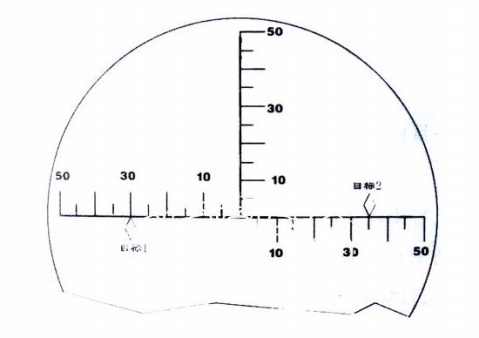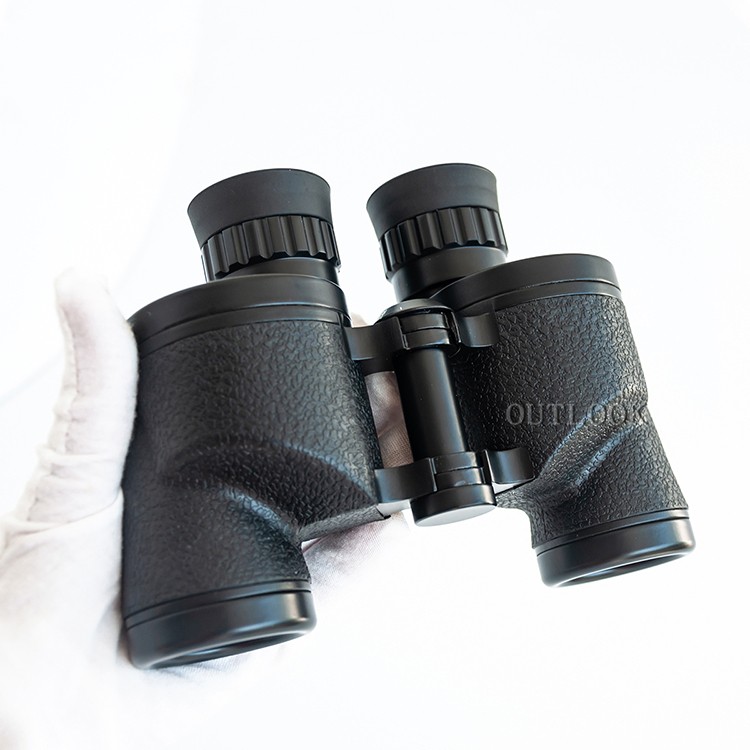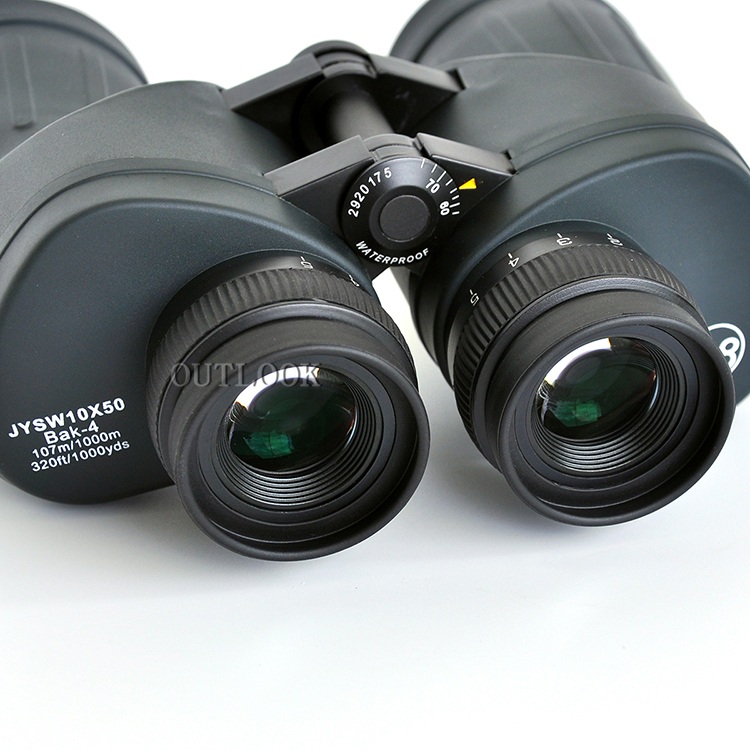Rangefinder Telescope
A rangefinder telescope is used to measure the distance between the observer and the target. But how does a rangefinder telescope work? What kind of rangefinder telescope can measure distance? Most telescope have a reticle for this purpose, designed to meet military needs. How to use the reticle? Below is a brief explanation based on online resources and instruction manuals.
First of Rangefinder Telescope:
The reticle has vertical, horizontal, and range-finding markings. Each small division on the horizontal and vertical scals represents 5 mils, and each large division represents 10 mils.
The range-finding scale of the rangefinder telescope is designed for a target height of 2m, with a range from 400m to 2000m. Within 1000m, each small division represents 50m, and each large division represents 100m; between 1000m and 2000m, each small division represents 100m, and each large division represents 500m. (See diagram below)

1. Measuring Directional Angle
The directional angle is the angle between two targets (or the two ends of a single target) as seen from the telescope horizontally.
When the directional angle between the two targets is within the range of the reticle, align one end of the reticle with target 1, then read the value on the reticle where target 2 aligns. This is the measured directional angle in mils.
As shown in the diagram, the directional angle between the two targets is 0-65 mils.
2. Measuring Elevation Angle
The elevation angle is the angle between two targets (or the two ends of a single target) as seen from the telescope vertically.
a) When the elevation angle is small, align the center of the reticle (or any crosshair) with the bottom of the target, and read the value on the reticle where the top of the target aligns. This is the measured elevation angle in mils. As shown in the diagram, the elevation angle is 0-15 mils.
b) When the elevation angle is large, use a segmented measurement method. Add the values of each segment to obtain the total elevation angle.
3. Distance Measurement
Measuring distance using a rangefinder scale
a) When the target height is 2m, align the lower edge of the target with the horizontal line on the rangefinder scale. The reading where the upper edge of the target intersects the scale indicates the distance between the target and the observer. As shown in the figure, the distance between the target and the observer is 550m.
b) When the target height is greater than (or less than) 2m, the actual distance is calculated using the following formula:
L = L1 x H / 2 (m)
Where: L — Actual distance from the observer to the target (m)
L1 — Measured distance from the observer to the target (m) (measured using the rangefinder scale for a target height of 2m)
H — Target height (m)

Next, let's understand what a rangefinder telescope is.
A rangefinder telescope is a type of laser rangefinder that combines a rangefinding system with a telescope, integrating observation and measurement functions. A rangefinder telescope is a type of laser rangefinder, or a long-range laser rangefinder.
Principle:
Laser rangefinders telescope generally use the pulse method to measure distance. The laser rangefinder telescope emits a beam or a series of laser pulses to the target. The reflected laser beam returns to the detector of the rangefinder. The rangefinder calculates the distance by measuring the round-trip time of the laser beam.
Several important parameters to consider when selecting a rangefinding telescope:
1. Measurement Accuracy
Selecting a laser rangefinder with the appropriate accuracy according to the application requirements is the primary consideration. For outdoor activities, ballistic calculations, and other applications with lower accuracy requirements, a general-purpose laser rangefinder with an accuracy of around +/- 1 meter is usually used. For higher accuracy applications such as construction, land surveying, power line inspection, and engineering surveying, high-precision laser rangefinders are generally used. Currently, products like Topas can achieve an accuracy of 0.3 meters.
2. Measurement Range
Common laser rangefinders on the market have ranges of 600m, 800m, 1000m, 1200m, 1500m, 1800m, 2000m, and 5000m, etc. It's important to note that the nominal range is measured under standard climatic conditions. In foggy, rainy, or hazy conditions, the range will be shorter. Therefore, when purchasing, it's recommended to leave some margin. Generally, you should choose a rangefinder with a range about 1.2 times your actual required measurement distance.
3. Angle Measurement
For applications involving elevation angles and heights, such as in power systems or ballistics, a laser rangefinder with angle measurement capability can be used. These typically use an electronic compass or tilt sensor for angle measurement. Calibration may be necessary after prolonged use or exposure to strong magnetic fields. High-precision models can achieve an accuracy of 0.3°, while standard models typically have an accuracy of ±1°. Choose according to your specific needs.
4. Height Measurement
Some products have integrated height measurement functions. This function calculates height based on the angle and straight-line distance. Therefore, high-precision angle measurement is essential for accurate height measurement.
5. Continuous Range Measurement
Continuous range measurement is very useful in many situations, making this feature very important.
6. Continuous Angle Measurement
Some rangefinders also have a continuous angle measurement function.
7. Horizontal Distance Measurement of Binoculars
The measurement distance mentioned earlier refers to the straight-line distance from the measurement point to the target. Horizontal distance refers to the horizontal distance between the measurement point and the target. These two distances are different. This is a unique feature of rangefinders.
The following two products are telescope binoculars: one with a calibrated reticle, and the other a laser rangefinder.
Type 98 telescope YJM1050

The Type 98 telescope binoculars YJM1050 are a telescope observation device used for daytime observation, search, and surveillance of distant objects. The Type 98 telescope allows approximate measurement of the target's azimuth, elevation, and distance using the internal reticle. The Type 98 telescope meet the US military standard (MIL-STD-810) and can be used day and night.
1200m Laser Rangefinder Telescope
The 1200m laser rangefinder telescope are a laser rangefinding system that provides quick and accurate distance measurements. The unique optical performance of laser rangefinder telescope delivers a clear image under any conditions. This laser rangefinder telescope uses advanced digital circuitry and optics, and its lens quality surpasses that of other binoculars. The 1200m laser rangefinder telescope is widely used for distance measurement in sports, outdoor activities such as golf and hunting; for measuring distances of power poles, bridges, and construction sites; and for general topographic surveying and warehouse measurements.

